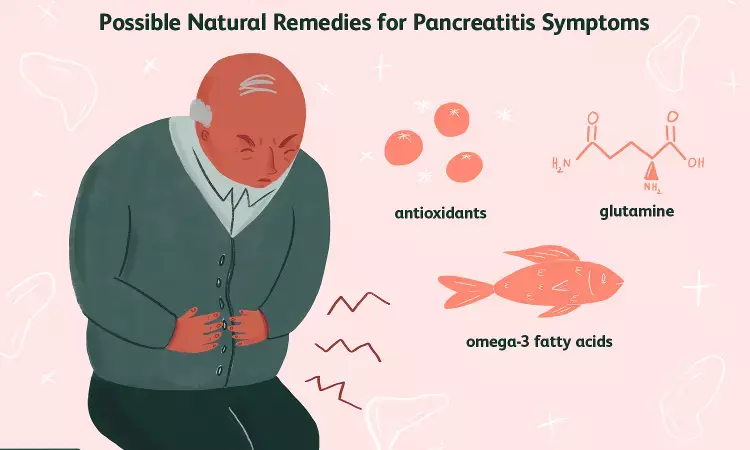- Home
- Medical news & Guidelines
- Anesthesiology
- Cardiology and CTVS
- Critical Care
- Dentistry
- Dermatology
- Diabetes and Endocrinology
- ENT
- Gastroenterology
- Medicine
- Nephrology
- Neurology
- Obstretics-Gynaecology
- Oncology
- Ophthalmology
- Orthopaedics
- Pediatrics-Neonatology
- Psychiatry
- Pulmonology
- Radiology
- Surgery
- Urology
- Laboratory Medicine
- Diet
- Nursing
- Paramedical
- Physiotherapy
- Health news
- Fact Check
- Bone Health Fact Check
- Brain Health Fact Check
- Cancer Related Fact Check
- Child Care Fact Check
- Dental and oral health fact check
- Diabetes and metabolic health fact check
- Diet and Nutrition Fact Check
- Eye and ENT Care Fact Check
- Fitness fact check
- Gut health fact check
- Heart health fact check
- Kidney health fact check
- Medical education fact check
- Men's health fact check
- Respiratory fact check
- Skin and hair care fact check
- Vaccine and Immunization fact check
- Women's health fact check
- AYUSH
- State News
- Andaman and Nicobar Islands
- Andhra Pradesh
- Arunachal Pradesh
- Assam
- Bihar
- Chandigarh
- Chattisgarh
- Dadra and Nagar Haveli
- Daman and Diu
- Delhi
- Goa
- Gujarat
- Haryana
- Himachal Pradesh
- Jammu & Kashmir
- Jharkhand
- Karnataka
- Kerala
- Ladakh
- Lakshadweep
- Madhya Pradesh
- Maharashtra
- Manipur
- Meghalaya
- Mizoram
- Nagaland
- Odisha
- Puducherry
- Punjab
- Rajasthan
- Sikkim
- Tamil Nadu
- Telangana
- Tripura
- Uttar Pradesh
- Uttrakhand
- West Bengal
- Medical Education
- Industry
Compared with diclofenac, buprenorphine more effective for Pain Relief in Acute Pancreatitis: Study

Compared with diclofenac, buprenorphine is more effective for Pain Relief in Acute Pancreatitis suggests a new study published in the Clinical Gastroenterology and Hepatology.
Although both nonsteroidal anti-inflammatory drugs (NSAIDs) and opioids are used for analgesia in acute pancreatitis (AP), the analgesic of choice is not known. They compared buprenorphine, an opioid, and diclofenac, an NSAID, for analgesia in acute pancreatitis In a double-blind randomized controlled trial, acute pancreatitis patients were randomized to receive intravenous diclofenac or intravenous buprenorphine. Fentanyl was used as rescue analgesia, delivered through a patient-controlled analgesia pump. The primary outcome was the difference in the dose of rescue fentanyl required. Secondary outcomes were the number of effective and ineffective demands of rescue fentanyl, pain-free interval, reduction in visual analogue scale (VAS) score, adverse events, and organ failure development. Results: Twenty-four patients were randomized to diclofenac and 24 to buprenorphine. The 2 groups were matched at baseline. The total amount of rescue fentanyl required was significantly lower in the buprenorphine group:130 μg, interquartile range (IQR), 80–255 vs 520 μg, IQR, 380–1065 (P < .001).
The number of total demands was 32 (IQR, 21–69) in the diclofenac arm vs 8 (IQR, 4–15) in the buprenorphine arm (P < .001). The buprenorphine group had a more prolonged pain-free interval (20 vs 4 hours; P < .001), with greater reduction in the VAS score at 24, 48, and 72 hours compared with the diclofenac group. These findings were confirmed in the subgroup of moderately severe/severe pancreatitis. Adverse events profile was similar in the 2 groups. Compared with diclofenac, buprenorphine appears to be more effective and equally safe for pain management in acute pancreatitis patients, even in the subcohort of moderately severe or severe pancreatitis
Reference:
Mayank Saini, Jayanta Samanta, Antriksh Kumar, Arup Choudhury, Jahnvi Dhar, Anudeep Jafra, Rajeev Chauhan, Gaurav Muktesh, Pankaj Gupta, Vikas Gupta, Thakur Deen Yadav, Rakesh Kochhar, Gabriele Capurso, Enrique De-Madaria, Antonio Facciorusso. Buprenorphine Versus Diclofenac for Pain Relief in Acute Pancreatitis: A Double-Blinded Randomized Controlled Trial. Clinical Gastroenterology and Hepatology, Volume 22, Issue 3. 2024,Pages 532-541.e8,ISSN 1542-3565,https://doi.org/10.1016/j.cgh.2023.10.021. (https://www.sciencedirect.com/science/article/pii/S1542356523008649)
Dr. Shravani Dali has completed her BDS from Pravara institute of medical sciences, loni. Following which she extensively worked in the healthcare sector for 2+ years. She has been actively involved in writing blogs in field of health and wellness. Currently she is pursuing her Masters of public health-health administration from Tata institute of social sciences. She can be contacted at editorial@medicaldialogues.in.
Dr Kamal Kant Kohli-MBBS, DTCD- a chest specialist with more than 30 years of practice and a flair for writing clinical articles, Dr Kamal Kant Kohli joined Medical Dialogues as a Chief Editor of Medical News. Besides writing articles, as an editor, he proofreads and verifies all the medical content published on Medical Dialogues including those coming from journals, studies,medical conferences,guidelines etc. Email: drkohli@medicaldialogues.in. Contact no. 011-43720751


